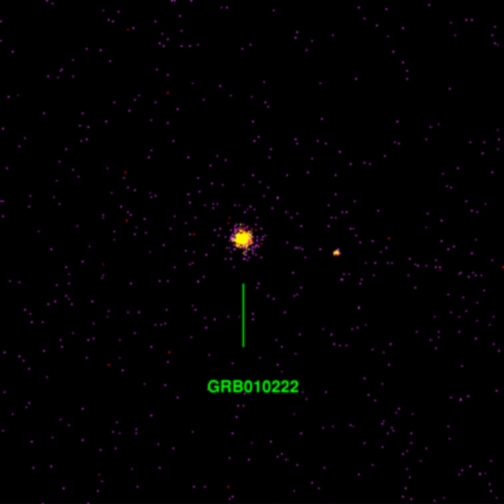
 Credit: NASA/CNR/L.Piro et al.
Credit: NASA/CNR/L.Piro et al.
Best-Looking Burst
Titanic explosions called gamma ray bursts are produced by the death of an
extremely massive star (containing perhaps 100 times the mass of the sun),
or so goes current theory. These titanic explosions, called "hypernovae"
are similar to more familiar "supernovae", though hypernovae are much more
powerful. Hypernovae are recognized by the enormous amounts of gamma-rays
they produce; as the blast wave encounters other nearby stars and clouds of
gas, the interaction produces a strong shock which generates enormous
amounts of x-radiation. Since X-ray telescopes have much better spatial
resolution than gamma-ray telescopes, astronomers find are able to pinpoint
the source of the gamma ray burst best using X-ray observations. One
exciting new X-ray observation of a gamma ray burst is shown above. The
burst occurred on February 22, 2001, and this explosion was captured with
the ACIS camera on the Chandra X-ray
Observatory. Since Chandra has the best spatial resolution of any
X-ray observatory ever flown, this image is arguably the best image yet
obtained of a gamma-ray burst. The ACIS observation helps confirm and
constrain the hypernova model, and helps astronomers understand the life
cycle of star-forming regions, where the death of one big star might lead
to the formation of many smaller ones.
Last Week *
HEA Dictionary * Archive
* Search HEAPOW
* Education
Each week the HEASARC
brings you new, exciting and beautiful images from X-ray and Gamma ray
astronomy. Check back each week and be sure to check out the HEAPOW archive!
Page Author: Dr. Michael F.
Corcoran
Last modified April 9, 2001


